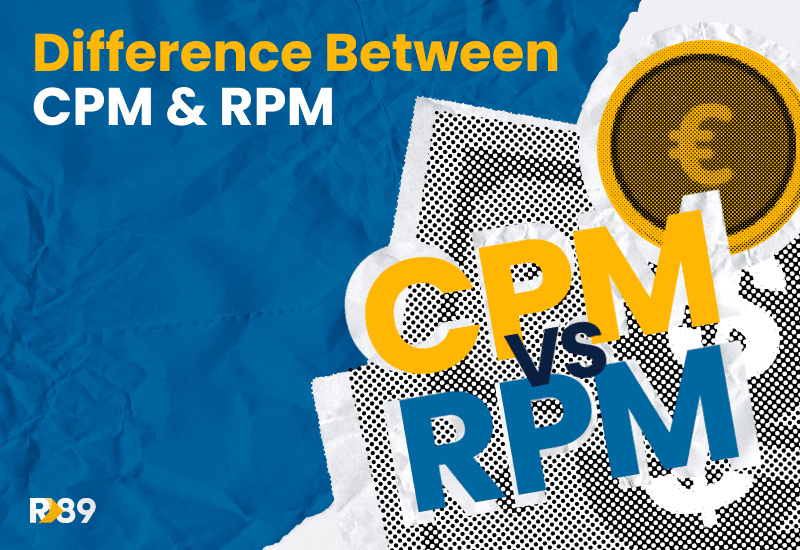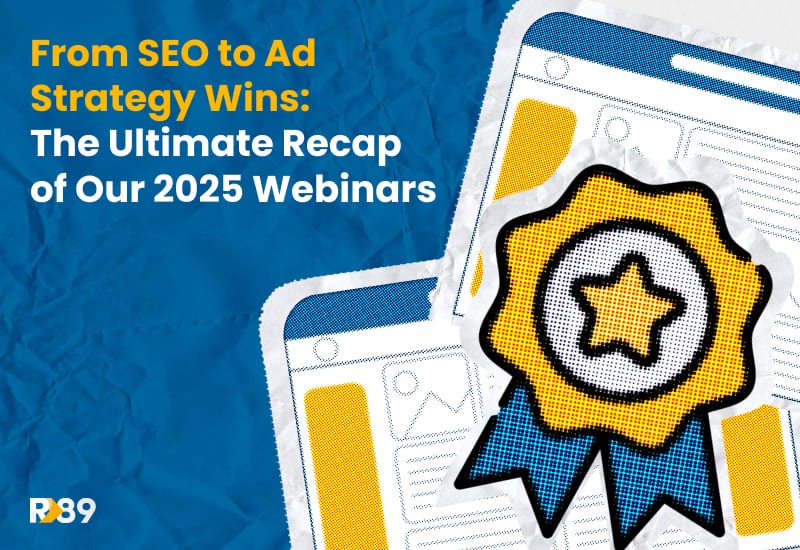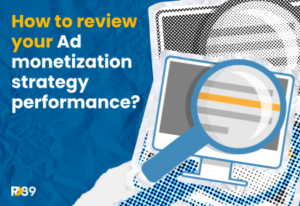Se você já está na indústria de publicidade programática há pelo menos 2 segundos, provavelmente já ouviu falar desses termos. Então, qual é a grande questão? CPM e RPM são métricas valiosas que todo publisher precisa conhecer de cor. São dois indicadores essenciais para acompanhar se você se importa com a receita do seu site.
Vamos lá: CPM é o valor que os anunciantes pagam para cada mil impressões de anúncio. Já o RPM é a estimativa do quanto você ganha para cada mil visualizações de páginas monetizáveis. Vamos explicar cada um deles de forma bem clara, para você deixar sua estratégia de anúncios tinindo! 🏃🏻
O que é CPM?
CPM, ou Custo por Mil, é uma métrica que mostra quanto um anunciante paga para cada mil impressões. Para os publishers, é uma informação super útil para entender o valor do seu site na hora de definir o preço de um espaço publicitário.
Essa métrica varia bastante. Assim como as estações do ano mudam, o CPM também muda. Por exemplo, durante a Black Friday e o Natal, os CPMs disparam porque os anunciantes estão gastando mais e competindo pelos melhores espaços de anúncio. Já em janeiro, os CPMs despencam, como um paraquedista. O que fazer, então? Planeje sua estratégia considerando a sazonalidade dos CPMs e siga tranquilo na vida de publisher.
Atenção a um detalhe: não confunda CPM com vCPM. vCPM significa Custo por Mil Impressões Visíveis. Ele mede o número de pessoas que realmente visualizaram o anúncio, considerando a visibilidade. O CPM tradicional não leva em conta a qualidade da impressão, enquanto o vCPM considera apenas as impressões visíveis.
Agora que esclarecemos isso, bora para a fórmula mágica do CPM! 🪄
Como calcular o CPM?
CPM = (Receita Total ÷ Impressões Totais) x 1000
Imagine que um anunciante gastou 200€ em um anúncio que gerou 100.000 impressões. Como calcular o CPM?
Receita Total: 200€
Impressões: 100,000
CPM = (200 ÷ 100,000) x 1000
CPM = 2€
Ou seja, o anunciante pagou 2€ por cada mil impressões do anúncio. Simples assim.
Se você não está a fim de fazer todas essas contas na mão, dá uma olhada no painel da Refinery89. Lá você encontra essa métrica em um estalo, tanto o CPM quanto o RPM! 😉
Por que os publishers devem se importar com o CPM?
O CPM é uma métrica da qual os anunciantes tiram bastante proveito para definir os preços das campanhas. Mas isso não significa que você, como publisher, deva ignorá-la. Pelo contrário! Você pode usar o CPM junto com o número de impressões para ter uma base sólida na hora de definir o preço dos seus espaços publicitários.
Valorize o seu site! O CPM é um ótimo ponto de partida para comparar o valor dos anúncios exibidos em diferentes formatos, parceiros AdTech e redes de anúncios. Além disso, ele é super útil para tomar decisões estratégicas na hora de montar sua estratégia de monetização.
O que é RPM?
RPM, ou Receita por Mil, também conhecido como Page RPM, é a estimativa da receita gerada por uma página para cada mil visualizações de página monetizáveis. Ou seja, são as páginas do seu site que exibem anúncios.
Direto ao ponto: diferente do CPM, que mede quanto você ganha por mil impressões em uma unidade de anúncio, o RPM mostra a receita total gerada pelas impressões de anúncios em todo o seu site.
O RPM é uma métrica muito completa, porque leva em conta o CPM dos blocos de anúncio, a quantidade de anúncios por página e a taxa de preenchimento (fill rate).
Beleza? Agora vamos à fórmula!
Como calcular o RPM?
RPM = (Receita Total ÷ Visualizações de Página Monetizáveis) x 1000
Exemplo: no mês passado, você gerou uma receita total de 3000€ com anúncios e teve 500.000 visualizações em páginas monetizáveis.
Receita Total: = 3000€
Visualizações de Página Monetizáveis = 500,000
RPM = (3,000 ÷ 500,000) x 1 000
RPM = 6€
Ou seja, você ganhou 6€ a cada mil visualizações de páginas monetizáveis. Tranquilo, né? E para facilitar ainda mais, no painel da Refinery89 você já encontra essa métrica calculada pra você! 😉
Por que os publishers devem se importar com o RPM?
O RPM é super importante para os publishers porque ajuda a identificar quais posições de anúncio, formatos ou tipos de conteúdo geram mais receita. Também serve para ajustar suas estratégias de conteúdo, aumentando o engajamento e a visibilidade dos anúncios. E claro, entender o valor do seu inventário de anúncios é essencial para tomar decisões estratégicas.
Em qual métrica os publishers deveriam focar: CPM ou RPM?
É muito comum, especialmente durante negociações, que as pessoas falem em termos de CPM. Um CPM garantido é um pagamento fixo por mil impressões, mas isso não garante que você receberá toda essa receita, a menos que tenha uma taxa de preenchimento de 100% (o que é extremamente raro).
Por outro lado, o RPM é uma métrica mais detalhada que não considera apenas o CPM, mas também fatores como a taxa de preenchimento, a visibilidade e as impressões monetizadas para determinar sua receita total por mil impressões.
Veja você mesmo com um exemplo:
Vamos supor que você define um preço mínimo de CPM de US$ 2,00 (o preço mínimo de leilão para seus espaços de anúncio).
- Se a sua taxa de preenchimento for apenas 50%, seu RPM efetivo cai para US$ 1,00.
- Se a sua taxa de preenchimento for 90%, seu RPM efetivo será de US$ 1,80.
Resumindo, o RPM é a métrica na qual você, como publisher, deve focar se seu principal objetivo é maximizar o desempenho da monetização dos seus anúncios, pois ele reflete o dinheiro que você realmente recebe, e não apenas o valor do lance.
Resumindo…
CPM e RPM são métricas bem diferentes, mas essenciais para qualquer publisher que quer maximizar a receita de anúncios. O CPM ajuda a definir o preço dos blocos de anúncio no seu site, enquanto o RPM mostra a estimativa do que você está realmente ganhando com todos os seus espaços de anúncios.
Quer começar a maximizar a sua receita? A gente pode te ajudar a montar uma estratégia de anúncios perfeita, passo a passo! 💪🏻 Fala com os especialistas da Refinery89!








